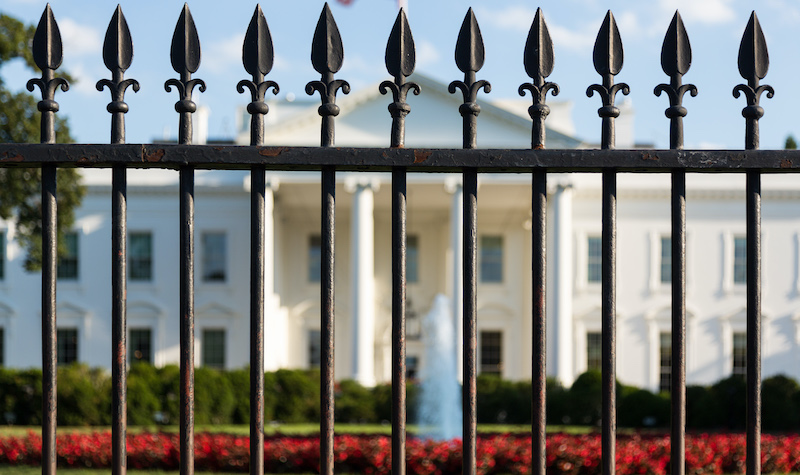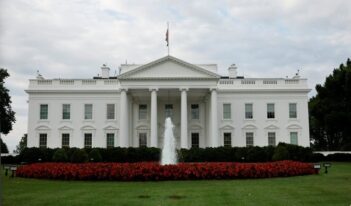
Presidential administrations have taken dramatically different approaches to regulation over the last ten years.
The decade since The Regulatory Review began publishing has seen dramatic shifts in regulation, with two administrations that arguably pursued the most regulatory and least regulatory agendas of any President in recent history. Yet, despite the changes in regulatory rhetoric over the last decade, core principles and practices have endured.
Ten years ago, the economy was emerging from the Great Recession, and President Barack H. Obama was in his second year in office. Soon after his inauguration, he signed a memorandum directing the Office of Management and Budget (OMB) to work with regulatory agencies to provide him with recommendations for a new executive order to replace President William J. Clinton’s 1993 Executive Order 12,866 governing regulatory analysis and the review of significant regulatory actions by OMB’s Office of Information and Regulatory Affairs (OIRA).
President Obama acknowledged the importance of that 1993 order in guiding the review of regulations “to ensure consistency with presidential priorities, to coordinate regulatory policy, and to offer a dispassionate and analytical ‘second opinion’ on agency actions.” He also thought, however, that during “this time of fundamental transformation” the process of reviewing regulations—as well as “the principles governing regulation in general—should be revisited.” His Administration sought recommendations about various aspects of the regulatory process, including OIRA’s relationship with federal agencies, the reduction of undue regulatory delay, the role of benefit-cost analysis, and the possible roles for “the behavioral sciences in formulating regulatory policy.”
The next year, President Obama signed a new order, Executive Order 13,563. But this order did not reflect a fundamental transformation of the regulatory process nor make changes to the principles governing regulation. Instead, the new order reaffirmed Executive Order 12,866, while modernizing the role for public participation by encouraging greater use of the internet, as well as by providing supplemental directives aimed at improving coordination, strengthening retrospective review of existing regulations, and expanding reliance on “regulatory approaches that reduce burdens and maintain flexibility and freedom of choice for the public.” President Obama also issued Executive Order 13,579, which, for the first time, encouraged independent agencies to conduct analysis of new and existing regulations.
During President Obama’s tenure, agencies issued rules at a faster pace than during prior administrations. For example, when the U.S. Congress failed to pass climate legislation, the President relied on existing statutes to pursue regulation of greenhouse gas emissions from vehicles and power plants. Furthermore, Congress did pass two significant laws early in his presidency, the Dodd-Frank Wall Street Reform and Consumer Protection Act and the Patient Protection and Affordable Care Act. These laws greatly expanded federal regulatory agencies’ responsibilities with respect to financial markets and health care, respectively.
By the end of President Obama’s tenure, agencies had issued almost 500 “economically significant” regulations—that is, rules with impacts estimated to be more than $100 million per year. The Code of Federal Regulations grew 17 percent from 2009 through 2016.
President Obama’s successor, however, has taken a dramatically different approach to regulation.
During the 2016 campaign, then-candidate Donald J. Trump railed against “job-killing regulations.” Soon after taking office, he issued Executive Order 13,771, which required agencies to remove two regulations for every new one they issued and to offset new costs by reducing existing regulatory burdens. Working with Republican majorities in Congress under the Congressional Review Act (CRA), President Trump disapproved 14 rules issued toward the end of the Obama Administration. This was the first time the CRA had been used so aggressively to undo a predecessor’s regulatory policies.
Like President Obama, President Trump seriously considered replacing Executive Order 12,866. His regulatory budgeting order, Executive Order 13,771, not only failed to mention President Obama’s orders but also did not explicitly discuss a role for benefit-cost analysis in setting budgets or in making decisions regarding which regulations to modify or eliminate. Subsequent orders and OMB guidance, however, did refer to the previous administration’s orders—indicating that the Trump Administration did still expect agencies to consider benefits as well as costs. In 2018, at an event commemorating the 25th anniversary of Executive Order 12,866, the OIRA Administrator made clear that President Trump would not rescind the 1993 order.
During President Trump’s first three years in office, his Administration reduced the pace of new regulations and adjusted the future trajectory of some existing standards, but there is little conclusive evidence that the Administration has “rolled back” existing regulations. As of the end of 2019, the Code of Federal Regulations was slightly longer than it had been when he took office.
What have we learned from the last decade?
In our polarized political environment, major legislative action is rare except when the President and both houses of Congress are controlled by the same party. In the early years of the Obama Administration, a Democratic Congress passed two major pieces of legislation authorizing new regulatory authority. In President Trump’s first year, a Republican Congress made record-setting use of the CRA to disapprove regulations.
With those few exceptions, when it comes to setting regulatory policy, the executive branch has been where the action is. For the foreseeable future, given political polarization, it seems likely that executive agencies will continue to set policy using existing statutory authority—such as by addressing greenhouse gas emissions under the Clean Air Act.
Agencies’ regulatory authority is not unconstrained, however. Even if Congress is not expected to enact major legislation, the CRA genie is out of the bottle, and this means that, at a minimum, Congress is influencing the timing of regulatory decisions. For example, the Trump Administration appears to have worked diligently to issue priority rules before the CRA deadline, which falls sometime in the spring or summer of 2020, helping to immunize these rules from potential review by the next Congress under the CRA. Congress is also applying the CRA more broadly to disapprove sub-regulatory guidance and independent agency rules.
Although the courts over the last century have permitted greater delegation of legislative authority to executive agencies and have generally deferred to agency interpretations of vague statutes, courts may be moving to hold agencies more accountable. According to the Institute for Policy Integrity at the New York University School of Law, a large percentage of lawsuits challenging Trump Administration regulations have succeeded in court. Obama Administration rules also faced setbacks in court, as judges increasingly expected agencies to justify their actions with benefit-cost analysis.
Probably the biggest constraint on agency action remains the President himself. Regardless of their views on the proper role for regulation—and Presidents have had diametrically opposed views over the last ten years—all Presidents recognize that regulation is one of the key tools available for achieving their policy goals. The longstanding practices of centralized review and regulatory impact analysis give Presidents some control over administrative agencies’ actions. These policies and processes have survived another ten tumultuous years and are likely to continue for the foreseeable future.
The opportunity for the public to comment on proposed rules has been integral to the U.S. regulatory development process since 1946. To ensure that regulatory agencies are democratically accountable, it is essential that those members of the public who are interested in or affected by regulatory policy have a resource such as The Regulatory Review to provide analysis and expert opinion from a range of perspectives.
On their tenth anniversary, I extend my congratulations to Cary Coglianese and his impressive team of editors. Through the Penn Program on Regulation and The Regulatory Review, Professor Coglianese has created both an opportunity for high-achieving law students to gain essential administrative law and regulatory experience, as well as a forum for regulatory experts from around the globe to share insights on the latest developments in regulatory law. In ten years, The Regulatory Review has become a key resource for anyone interested in understanding regulation.
I have appreciated the insights featured in The Review over the last decade and look forward to another ten years of accessible, constructive, and nonpartisan scholarship from the faculty and students affiliated with the Penn Program on Regulation and The Regulatory Review. Happy anniversary!
This essay is part of an eight-part series, entitled Celebrating The Regulatory Review’s Tenth Anniversary.




